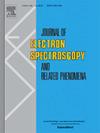利用氖原子的可见荧光对真空紫外线进行偏振测量
IF 1.5
4区 物理与天体物理
Q2 SPECTROSCOPY
Journal of Electron Spectroscopy and Related Phenomena
Pub Date : 2024-10-01
DOI:10.1016/j.elspec.2024.147488
引用次数: 0
摘要
通过原子共振将短波长光转换为可见荧光,利用荧光偏振计研究了真空紫外光的偏振状态。除了以前使用氦原子的成熟方法外,研究结果表明,通过观察氖原子发出的可见荧光也可以评估真空紫外光的偏振状态。这项研究表明,荧光偏振计可以与各种原子和分子结合使用,从而扩大了这种方法的应用波长范围。本文章由计算机程序翻译,如有差异,请以英文原文为准。
Polarization measurement of vacuum ultraviolet light using visible fluorescence from neon atoms
The polarization state of the vacuum ultraviolet light has been studied with a fluorescence polarimeter based on the conversion of short wavelength light into visible fluorescence via atomic resonance. In addition to the previously established method using helium atoms, the results show that polarization state of vacuum ultraviolet light can be evaluated by observing the visible fluorescence emitted from neon atoms. This study demonstrates that a fluorescence polarimeter can be used in conjunction with a variety of atoms and molecules and thus extends the range of wavelengths to which this method can be applied.
求助全文
通过发布文献求助,成功后即可免费获取论文全文。
去求助
来源期刊
CiteScore
3.30
自引率
5.30%
发文量
64
审稿时长
60 days
期刊介绍:
The Journal of Electron Spectroscopy and Related Phenomena publishes experimental, theoretical and applied work in the field of electron spectroscopy and electronic structure, involving techniques which use high energy photons (>10 eV) or electrons as probes or detected particles in the investigation.

 求助内容:
求助内容: 应助结果提醒方式:
应助结果提醒方式:


